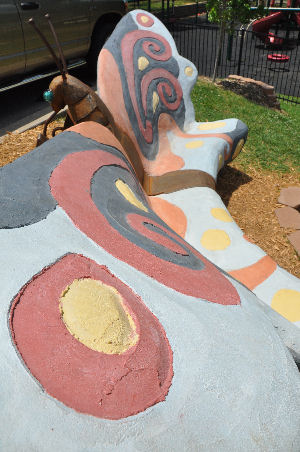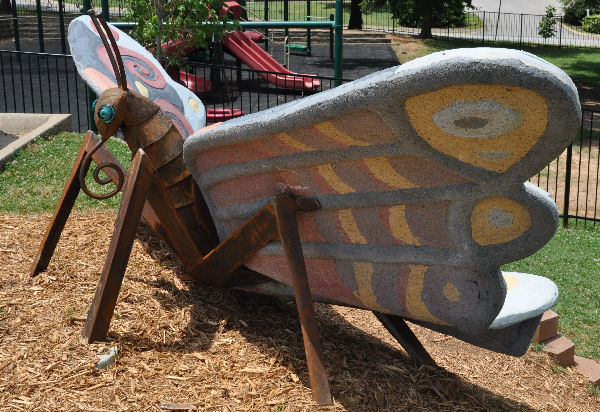
I knew this would happen, and of course I was nervous. That's a thin section sticking way out into space. It is very strong cement, though, and I did everything I knew to make it strong. The basalt rebar gives one a good feeling. It has a very rigid sort of springyness. The basalt mesh, I'm not so sure about, and the chopped fibers I don't know either. They cured covered in the wet sand pile for a week, and then I kept them wrapped and moist for another week. The wings definitely get some strength from their shape. I used Xypex additive, which is said to add up to 30% more strength. The surface of the cement has an extraordinarily tight finish, which gives me some confidence.
Making The Basalt Rebar
To Make the basalt rebar, I set up a couple of pins in the shop about 25 feet apart and reeled out 10 strands of basalt roving between them. then I mixed up a batch of epoxy and with rubber gloves I worked the epoxy into the fiber bundle. Then I took a little spool of the roving, which I had wound onto a stick and wrapped the epoxy filled bundle along its length in a spiral fashion. While the epoxy was still wet I cut the bundle loose and laid it onto the mold, which was covered with a layer of that super thin plastic that painters use to stop overspray (even epoxy doesn't stick to it).
I get my basalt fibers in their various forms from Sudaglass.

